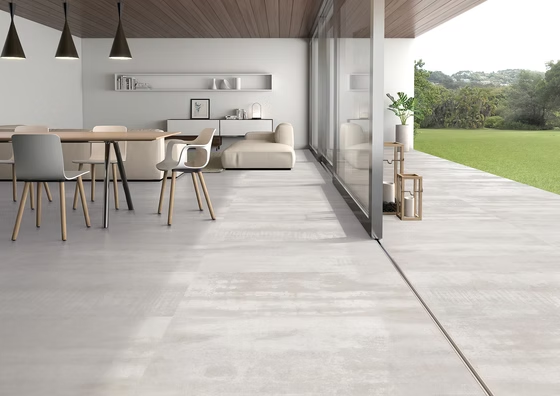When it comes to building barns in Texas, choosing the right materials is essential. Texas is known for its extreme weather conditions, from scorching summers to unpredictable storms. For barn owners, it’s crucial to select materials that are durable, weather-resistant, and long-lasting. One material that has been gaining popularity for Texas barns is Hardie Board. In this article, we’ll explore why Hardie Board is an excellent choice for Texas barn construction, how it works, and its many advantages.
What is Hardie Board?
Hardie Board, also known as fiber cement siding, is a durable and weather-resistant material commonly used for exterior construction. It’s made from a blend of cement, sand, and cellulose fibers, creating a tough, resilient surface that can withstand extreme weather conditions. While it’s often used in residential homes, Hardie Board is becoming a favorite for barn construction due to its ability to outlast traditional materials like wood or metal.
Why the Texas Climate Demands Durable Barn Materials
Texas has a unique and often harsh climate. The state’s diverse weather conditions—extreme heat, heavy rains, high winds, and occasional hail—can wreak havoc on traditional barn materials. Wood barns, for example, are prone to rot, warping, and termite damage, while metal barns can rust over time.
Hardie Board is designed to handle all these challenges, making it an ideal option for barns across Texas. Its resistance to moisture, fire, and pests ensures your barn will stand strong for decades, regardless of the conditions it faces.
Advantages of Using Hardie Board for Texas Barns
Here are some key reasons why more barn owners in Texas are choosing Hardie Board for their construction:
- Durability: Hardie Board is incredibly durable, able to withstand the extreme heat and heavy rainfall often seen in Texas. It’s also resistant to cracking, chipping, and warping.
- Low Maintenance: Unlike wood, Hardie Board requires minimal maintenance. You won’t have to worry about frequent painting, staining, or repairs due to pests or weather damage.
- Weather and Fire Resistance: Texas barns are often vulnerable to wildfires and storms. Hardie Board is non-combustible and offers superior protection against fire, hail, and wind damage.
- Pest Resistance: Hardie Board is not susceptible to termite or other pest damage, a common problem for barns in Texas.
- Aesthetic Options: Hardie Board comes in various textures, colors, and finishes, allowing barn owners to customize the look of their barns. Whether you prefer a rustic, wooden appearance or a sleek, modern look, Hardie Board offers the flexibility to achieve it.
- Eco-Friendly: The Hardie Board is made from sustainable materials, and its longevity reduces the need for frequent replacements, making it an environmentally responsible choice.
Step-by-Step Guide to Building a Hardie Texas Barn
- Planning and Design: Start by determining the size and layout of your barn. Consider your storage needs, whether you’ll be housing livestock and any other functional aspects. Then, select the style and color of the Hardie Board that fits your aesthetic.
- Choosing the Right Hardie Board: There are different types of Hardie Board available, including planks, panels, and shingles. For barns, most owners opt for panels due to their large surface area and ease of installation.
- Installation: Hardie Board installation should be done by a professional contractor with experience in fiber cement siding. This ensures the panels are installed correctly and can provide maximum protection against the elements.
- Finishing Touches: Once installed, you can add trim, doors, and other custom features to your Hardie Texas barn. Hardie Board can be painted or left in its natural color, depending on your preference.
Real-Life Examples of Hardie Texas Barns
Several barn owners across Texas have successfully built barns using Hardie Board. One owner in Central Texas noted that after a significant storm, their Hardie Board barn remained unscathed while neighboring barns with wood siding needed repairs. Another barn owner in West Texas praised the material’s resistance to pests, saying their Hardie barn has been termite-free for years.
Cost Comparison: Hardie Board vs. Traditional Materials
While the initial cost of Hardie Board may be higher than traditional wood or metal, the long-term savings are significant. Wood requires frequent maintenance and repair, while metal may need to be replaced due to rust or damage. Hardie Board’s durability and low maintenance make it a more cost-effective solution in the long run. Additionally, because it lasts longer, barn owners won’t have to replace or repair siding as frequently, leading to further savings over time.
FAQs About Hardie Texas Barns
Q: Does Hardie Board need frequent painting?
A: No, Hardie Board holds paint exceptionally well and may not need repainting for up to 15 years, depending on the climate.
Q: Is Hardie Board available across Texas?
A: Yes, Hardie Board is widely available throughout Texas. Most building supply stores and contractors can easily source it.
Q: How long does Hardie Board last?
A: Hardie Board can last over 50 years with minimal maintenance, making it one of the most durable materials available.
Conclusion:
When building a barn in Texas, durability and weather resistance are critical. Hardie Board offers both, along with the added benefits of low maintenance, fire resistance, and pest protection. Whether you’re building a new barn or upgrading an existing one, Hardie Board is the ideal solution for ensuring your barn stands the test of time. If you’re ready to build or upgrade your barn, consider Hardie Board as your go-to material for superior protection and aesthetic appeal. This article is clean, informative, and structured to optimize for search engines, using the keyword “Hardie Texas barn” naturally throughout the content without keyword stuffing.



